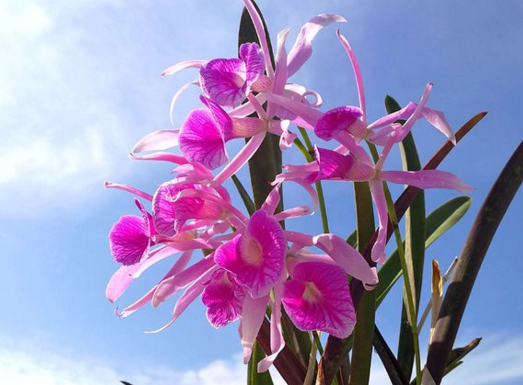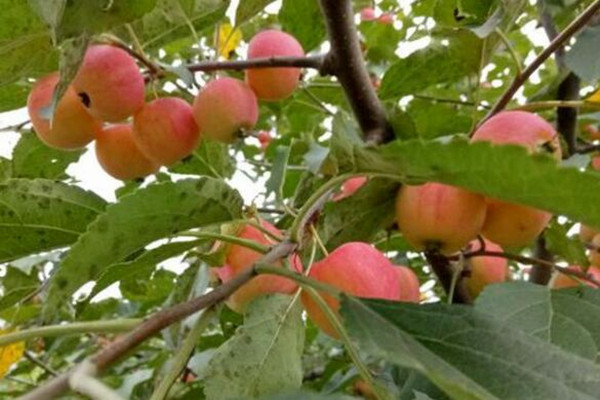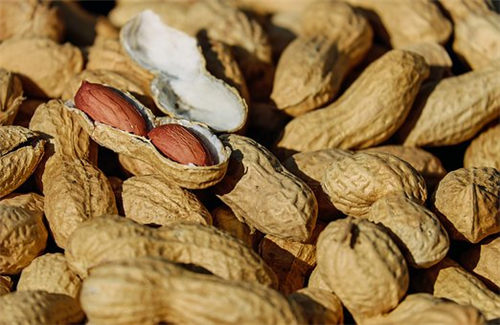How many times a year does Catalan bloom? How to maintain it well?
Cartland, also known as Akaimu and Gardlialan, is native to tropical America and is the national flower of Brazil, Colombia and other countries. it usually uses potted plants such as fern roots, moss and bark, so how many times a year does Cartland bloom? How to maintain and grow well?

How many times a year does Cartland blossom?
Cartland blossoms once or twice a year, and the flowering period is usually about 3-4 weeks.
Second, how does Cartland grow well?
1. Temperature: the optimum temperature for its growth is 20 ℃ to 30 ℃ from March to October and 12 ℃ to 24 ℃ from October to March of the following year, in which 25 ℃ to 30 ℃ in daytime, 15 ℃ to 20 ℃ at night, and diurnal range from 5 ℃ to 10 ℃ are suitable. The temperature in the greenhouse should not be lower than 10 ℃ in winter, otherwise the plant would stop growing and go into a semi-dormant state. When the temperature was lower than 8 ℃, the varieties that were generally not cold-tolerant were prone to cold injury, and the more cold-tolerant varieties could withstand the low temperature of 5 ℃. When the ambient temperature drops below 12 ℃ in late autumn and early winter, you should move indoors as soon as possible. When the temperature is more than 35 ℃ in summer, it is necessary to create a relatively cool environment through shading, spraying water and increasing ventilation, so that it can continue to maintain exuberant growth, spend the summer safely and avoid stem and leaf decay.
2. Lighting: it prefers a semi-shady environment with scattered light. If the light is too strong, the leaves and pseudo-corms are prone to yellowing or burns, and cause diseases. If the light is too weak, it will lead to excessive growth of leaves and thin leaves. In general, 50% to 60% of the light can be shaded by a black net in spring, summer and autumn, and there is no light in the shed in winter, and the plants placed indoors can be placed in front of the window to see some direct sunlight.
3. Moisture: Cartland not only needs plant material to be moist, but also requires high air humidity. It is epiphytic orchid, the root system is fleshy, it is appropriate to use plant materials with good drainage and air permeability, so as to avoid stagnant water and rotten roots. The growing season requires sufficient water, but not too much watering, especially in the winter with low humidity and poor light, the plant is in a semi-dormant state, so watering should be controlled effectively, otherwise it is easy to cause its rotten roots to die. In addition, Cartland has a dormant period of about 40 days after flower fade, during which the plant should be kept slightly moist. Generally, it is watered every 2 to 3 days in spring, summer and autumn, once every week in winter, when the basin bottom matrix is slightly moist, it is the most suitable watering time, watering should be thoroughly at one time, and the water quality is slightly acidic, and it is not suitable to water and spray at night to prevent the retention of moisture from causing disease. Cartland should generally maintain 60 to 65 per cent air humidity and can be humidified 2 to 3 times a day through a humidifier plus foliar spray to create a humid and suitable environment.
4. Plant material: the plant material for the cultivation of Cartland can usually be mixed with fern root, moss, bark, water moss, perlite, peat soil, coal cinder and so on. Generally, the plants with exuberant growth should be changed every 1 to 2 years, preferably when the new buds are just born in spring or after the flower fade, combined with ramet to change the pot.
5. Fertilizer: a considerable part of the fertilizer needed by Cartland can be obtained through mycorrhiza symbiotic with its root system, which requires relatively little fertilizer, should not be applied into feces and urine, and can not use organic fertilizer that is not fully mature. Otherwise, it is easy to lead to plant rotting root necrosis. The retted dry cake fertilizer or multi-component slow-release compound fertilizer particles can be buried in the plant material. During the growing season, the foliar was sprayed with 0.1% urea and 0.1% potassium dihydrogen phosphate mixture every semimonthly. When the temperature is more than 32 ℃ and below 15 ℃, fertilization should be stopped, and fertilization should also be suspended during flowering and dormancy period after flowering, so as to avoid fertilizer damage to roots.
Time: 2019-03-22 Click:
- Prev

How many years does the sand tree blossom and bear fruit? How to plant it? What are the effects and effects?
Sand fruit trees often grow on hillsides, flatlands and valley terraces, eat raw and taste like apples, have many varieties, and can be propagated by grafting, sowing, ramet and other methods. They are endemic to China. Sweet and sour and delicious. So, how many years does the sand tree blossom and bear fruit? How to plant it? What are the effects and effects? Sand fruit trees blossom and bear fruit for several years
- Next

What varieties of peanuts can produce high yield in 2018? How do you plant it?
In China, peanut is one of the most common crops and one of the economic sources of farmers' life, but because there are many varieties of peanuts and the ones planted in each place are different, it is necessary to select good varieties in order to achieve high yield of peanuts.
Related
- Fuxing push coffee new agricultural production and marketing class: lack of small-scale processing plants
- Jujube rice field leisure farm deep ploughing Yilan for five years to create a space for organic food and play
- Nongyu Farm-A trial of organic papaya for brave women with advanced technology
- Four points for attention in the prevention and control of diseases and insect pests of edible fungi
- How to add nutrient solution to Edible Fungi
- Is there any good way to control edible fungus mites?
- Open Inoculation Technology of Edible Fungi
- Is there any clever way to use fertilizer for edible fungus in winter?
- What agents are used to kill the pathogens of edible fungi in the mushroom shed?
- Rapid drying of Edible Fungi

